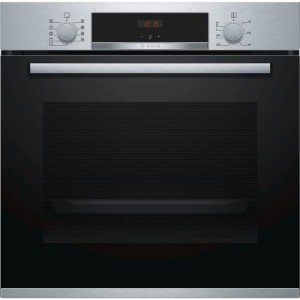The Rise of Built-In Ovens: A Seamless Approach to Modern Cooking
In modern kitchens, where design looks blend seamlessly with performance, one appliance stands out as a true game changer: the built-in oven. As house owners and chefs alike continue to seek ingenious options that boost their cooking experience, built-in ovens have actually become progressively popular. This post checks out the advantages, factors to consider, and trends surrounding built-in ovens, highlighting why they are a vital function in contemporary cooking spaces.
What is a Built-In Oven?
A built-in oven is a kitchen area device developed to be integrated into the cabinetry of a kitchen instead of standing alone. Unlike built in oven uk freestanding ovens, which can be moved and positioned anywhere, built-in ovens can be found in numerous styles and sizes to fit particularly within designated spaces. Offered in single or double setups, these ovens provide a streamlined appearance that matches modern-day kitchen styles.
Advantages of Built-In Ovens
1. Space-Saving Design
One of the most attractive benefits of built-in ovens is their space-saving design. By integrating the oven into cabinetry, you can maximize important counter and flooring space. This is especially beneficial in smaller sized cooking areas, where optimizing space is necessary. Built-in ovens can be set up at eye level, making them more available and minimizing the requirement to bend down.
2. Visual Appeal
Built-in ovens contribute to a streamlined and cohesive cooking area style. Readily available in different finishes-- such as stainless steel, black, white, and custom cabinetry-- they can blend flawlessly into the general design. This visual appeal enhances the kitchen's visual harmony and elevates the area, producing a contemporary and advanced atmosphere.
3. Boosted Functionality
Many built-in ovens come equipped with advanced cooking innovations, such as convection cooking, steam ovens, and clever features. These enhancements enable versatile cooking choices, making it much easier to achieve professional-level results in your home. Smart built-in ovens can even connect to Wi-Fi, allowing users to control the oven remotely, receive alerts, and gain access to a range of cooking programs and recipes.
4. Enhanced Ventilation
Due to the fact that built-in ovens can be integrated with kitchen area hoods and ventilation systems, they can help maintain much better air quality and reduce cooking smells. This is particularly substantial for those who enjoy to cook with aromatic spices and ingredients, as an effective ventilation system can keep the kitchen comfortable and inviting.
5. Modification Options
Built-in ovens use a wide variety of personalization alternatives to match individual cooking styles and requirements. From professional-grade devices with multiple cooking modes to compact designs for smaller cooking areas, property owners can pick the oven that fits their specific requirements. Many manufacturers likewise use personalized front panels, permitting you to match the oven's look to your cabinetry for a truly unified appearance.
Factors to consider When Choosing a Built-In Oven
While built-in ovens have lots of advantages, there are necessary considerations to remember before making a purchase:
1. Rate
Built-in ovens normally include a higher price than their freestanding equivalents due to their style and installation requirements. It's important to element in both the cost of the oven and any extra expenditures related to cabinetry modifications or installation.

2. Installation Requirements
Setting up a built-in oven frequently needs professional support, specifically if you require to modify existing cabinetry. Guarantee that you think about any expenses related to setup, consisting of labor and prospective cabinetry adjustments.
3. Size and Dimensions
Before buying a built-in oven, determine the designated space precisely to ensure a proper fit. Built-in ovens can be found in various sizes and setups, so selecting one that aligns with your requirements and cooking area design is important.
4. Way of life and Usage
Consider your cooking habits and needs when choosing a built-in oven. If you often host large events, a double oven may be more advantageous. On the other hand, if you have a compact kitchen area, a single-wall oven may be adequate.
Trends in Built-In Ovens
The cooking area home appliance market is continuously developing, and built-in ovens are not exempt from emerging patterns. Some existing patterns consist of:
Smart Technology Integration: With the rise of wise home innovation, built-in ovens now often feature connection alternatives. This permits users to keep track of cooking development and adjust settings via mobile apps.
Energy Efficiency: As sustainability becomes a top priority, lots of makers are investing in energy-efficient built-in ovens that reduce energy intake while keeping performance.
Multi-functional Designs: Built-in ovens now use features such as air frying, sluggish cooking, and steaming, supplying adaptability that meets a vast array of cooking techniques.
Conclusion
Built-in ovens undoubtedly represent an ideal mix of design, function, and convenience in today's kitchen areas. As built-in electric ovens select this contemporary service, the focus moves to producing a cooking area that is as aesthetically pleasing as it is useful. Whether you are constructing a brand-new home or redesigning your kitchen area, considering a built-in oven could elevate your culinary experience and transform your cooking area into a trendy and functional haven. With a selection of alternatives available and ongoing innovations in innovation, built-in ovens remain a standout option for both amateur cooks and culinary lovers alike.
